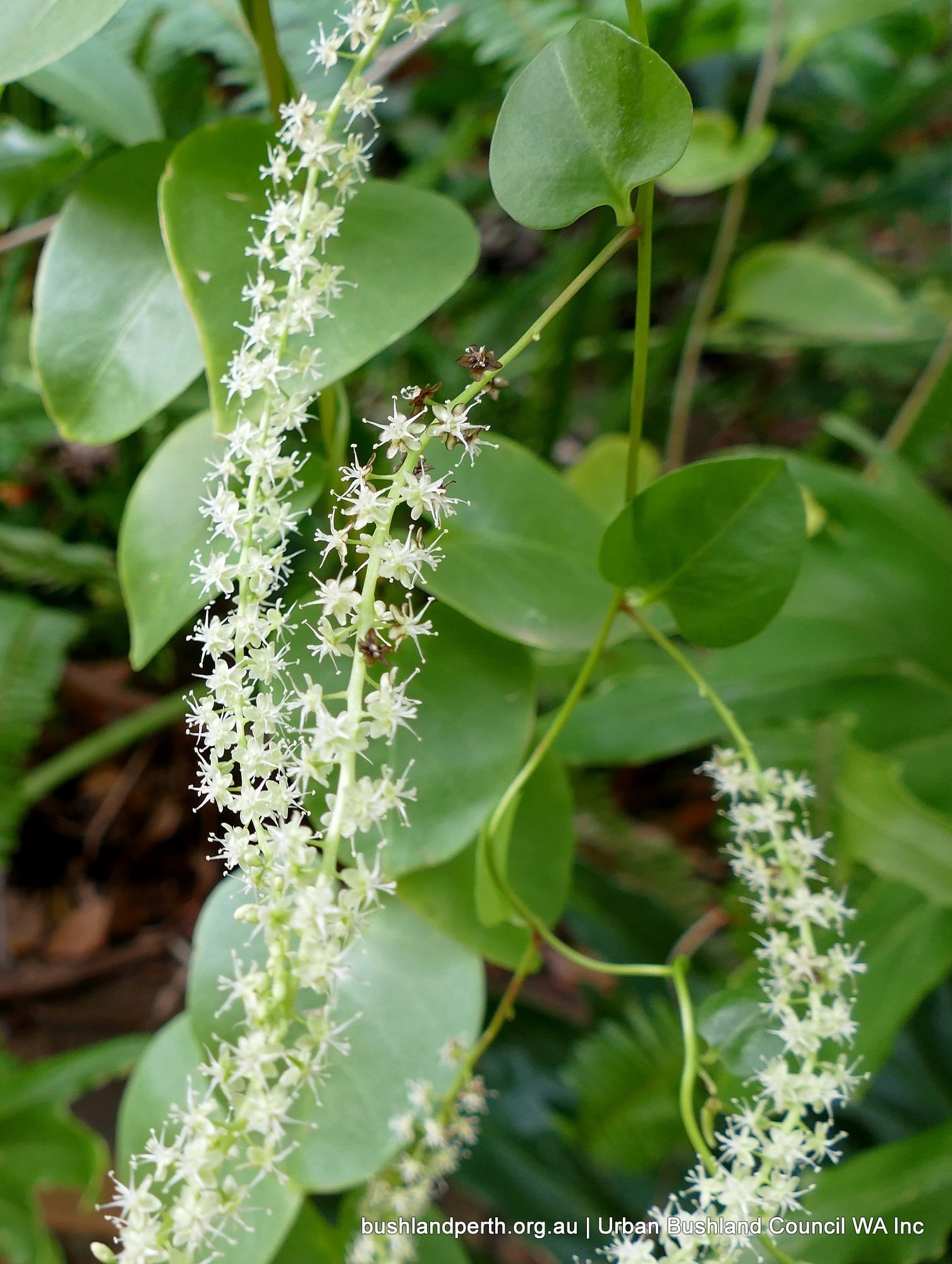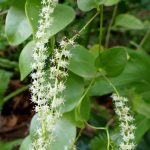Madeira Vine

Common name
Madeira Vine
Scientific Name
Anredera cordifolia
Type of plant
Uncategorised
About this weed
Madeira Vine is a vigorous climbing vine originating from South America. It was probably introduced as a garden plant (in autumn it has a massive display of white flowers) but has since escaped to creeklines and similar damp areas. Plants have both aerial and tuberous roots.
Description
Madeira Vine is a rampant climber with fleshy leaves and drooping spikes of small, white flowers. It reproduces by warty tubers on branches, tuberous roots, rhizomes and seed. Dispersal methods include water, garden refuse, gravity, soil movements and possibly birds. The seedbank of aerial & underground tubers may persist for 5 to 10 years. It is suspected to be poisonous to livestock. Fire does not seem to affect tuber growth.
Impact on Bushland
The vine is capable of smothering all vegetation. It can reach 40 meters in height and plants can grow a metre per week in warm, humid conditions. Tubers can be football size or bigger, and can be found up to a metre underground. The weight of vine can crush trees and other species on which it grows, inwardly collapsing the vegetation margin.
Location
Found on Garden Island and along creeklines and other damp places in a few areas of the South-West Province particularly the Swan Coastal Plain.
Priority for removal
Medium: will become a major threat to conservation values anywhere it has taken hold.
Management (hand)
Hand pull seedlings if less than 3 cm high. Dig out tubers, ensuring removal of every piece and cut aerial tubers from vines before removing plant. Plants can be manually removed in any month except June, July and August.
Management (herbicide)
Cut stems in solution of 1:2 Glyphosate in water. Stem scrape or drill and fill thick vines with 100% Glyphosate (do not cut the stem completely). Intensive follow up of resprouts at 2-4 leaf stage 2 to 3 times per year for up to ten years. Read the manufacturers’ labels and material safety data sheets before using herbicides. Plants can be treated in any month except June, July and August.
Flowering month/s
March, April
Flower colour/s
White
Information source
https://florabase.dpaw.wa.gov.au/browse/profile/17455
Additional information
https://florabase.dpaw.wa.gov.au/weeds/swanweeds/
Hussey, B.M.J., Keighery, G.J., Dodd, J., Lloyd, S.G. and Cousens, R.D. (2007) Western weeds. A guide to the weeds of Western Australia, Second Edition, The Weeds Society of Western Australia, Victoria Park, Western Australia.
This video clip has some interesting information: https://www.youtube.com/watch?v=4L7GBMF2NU4

